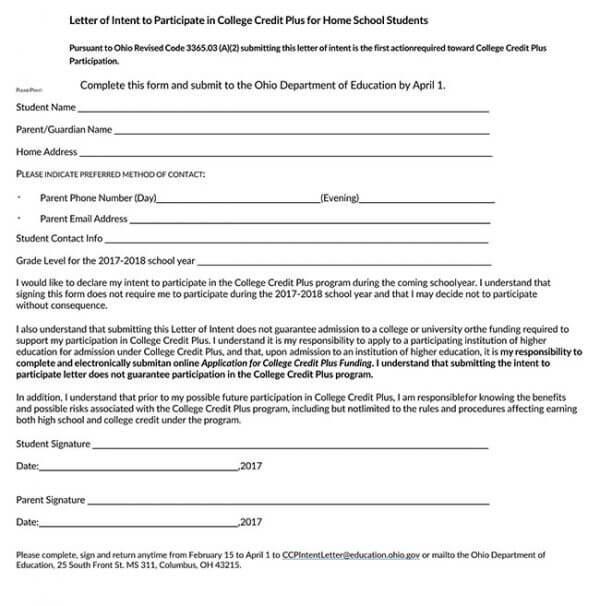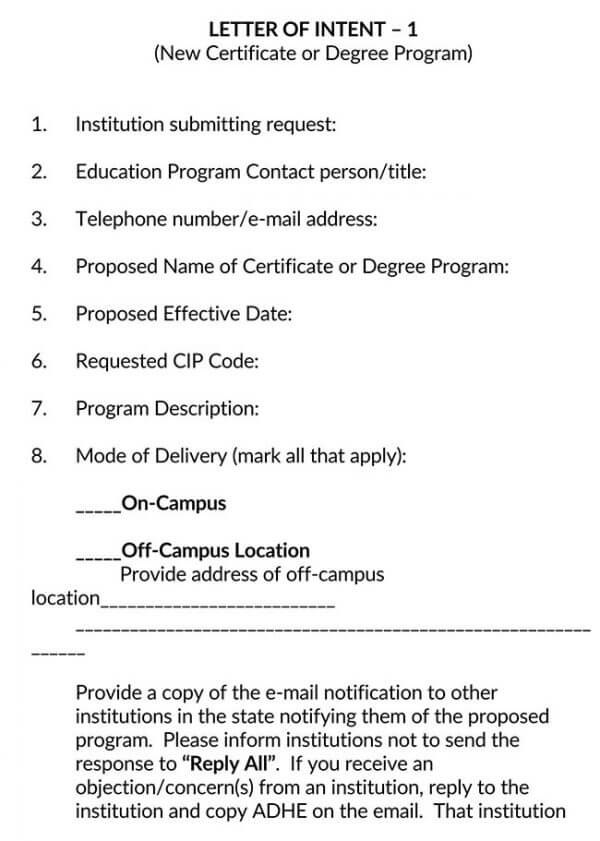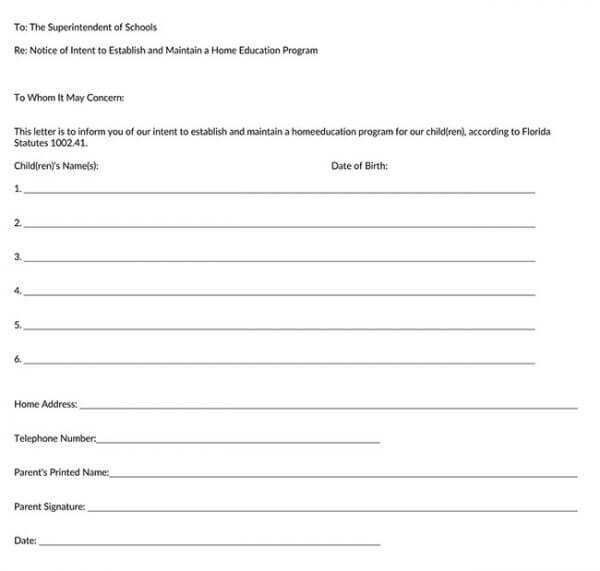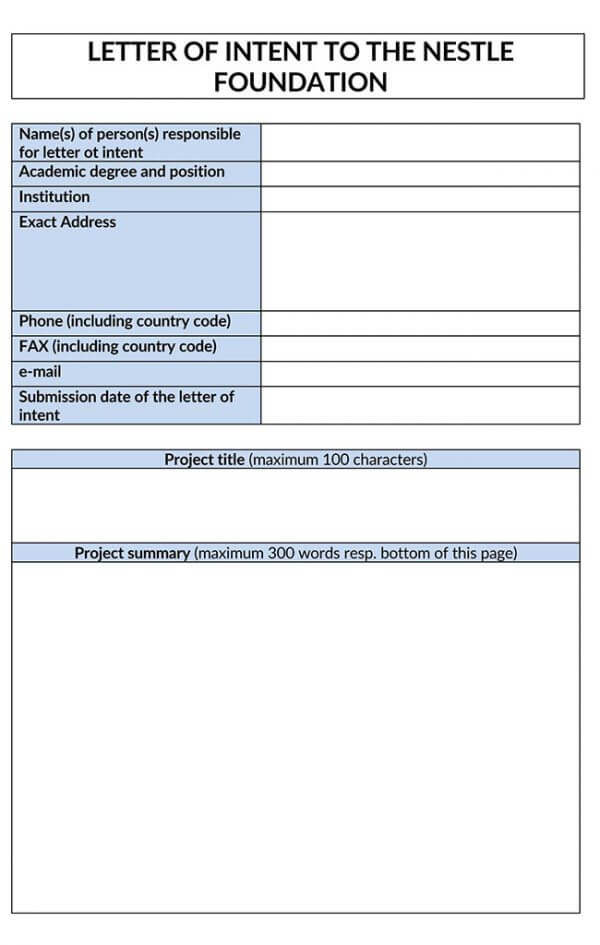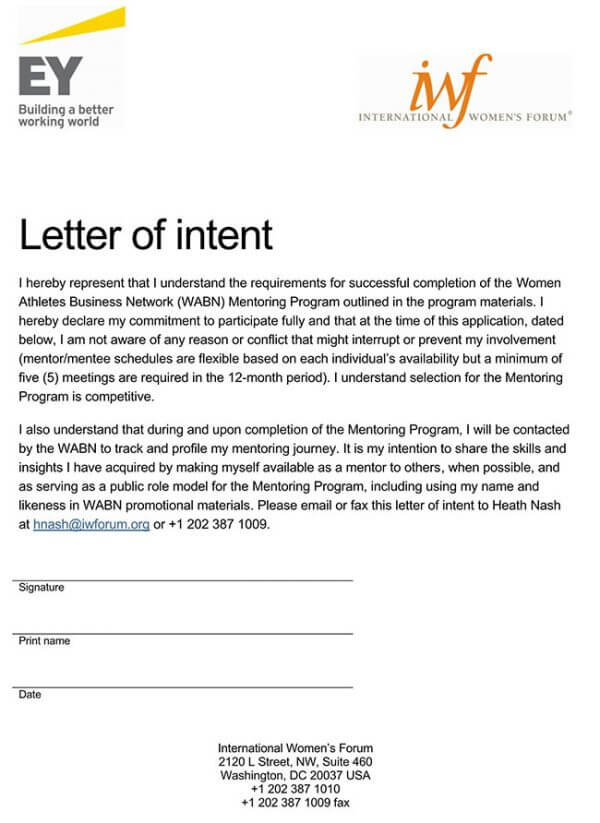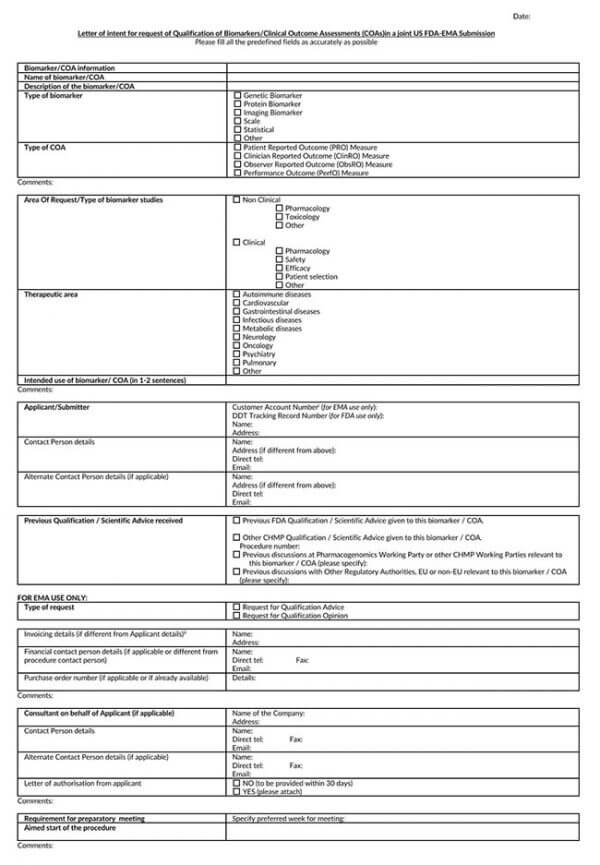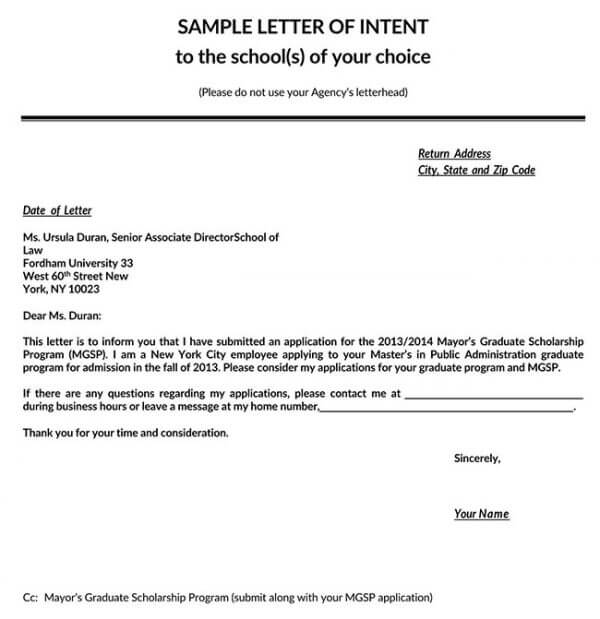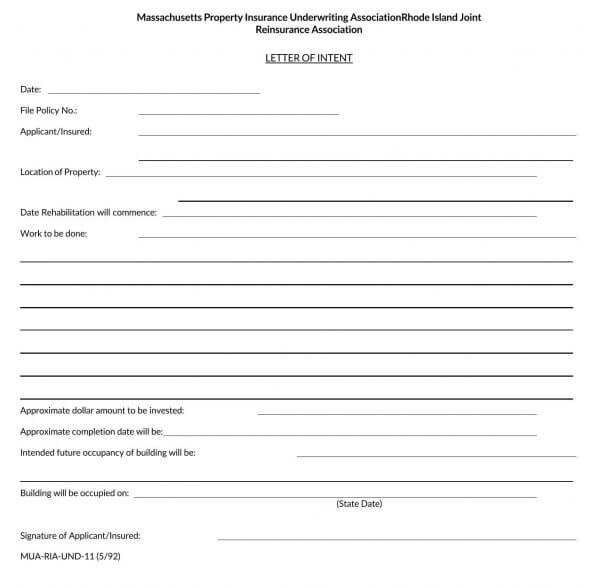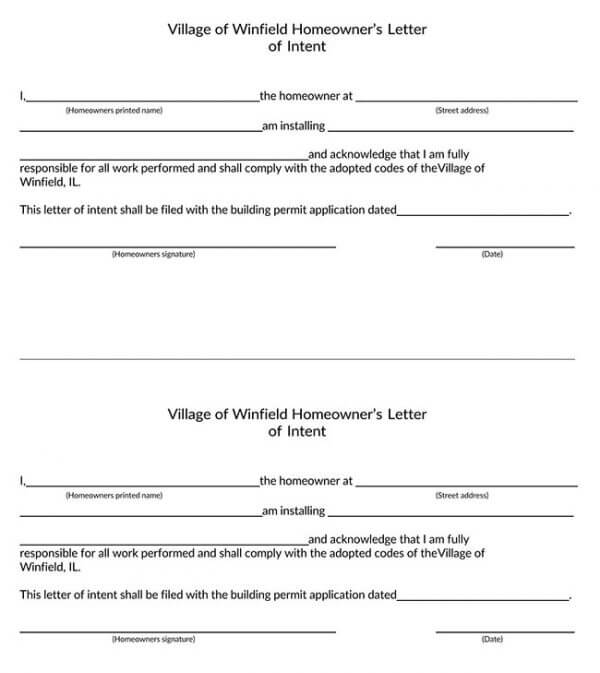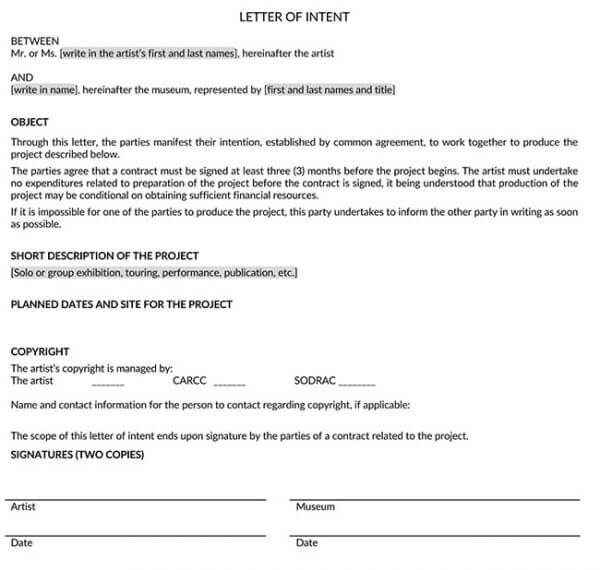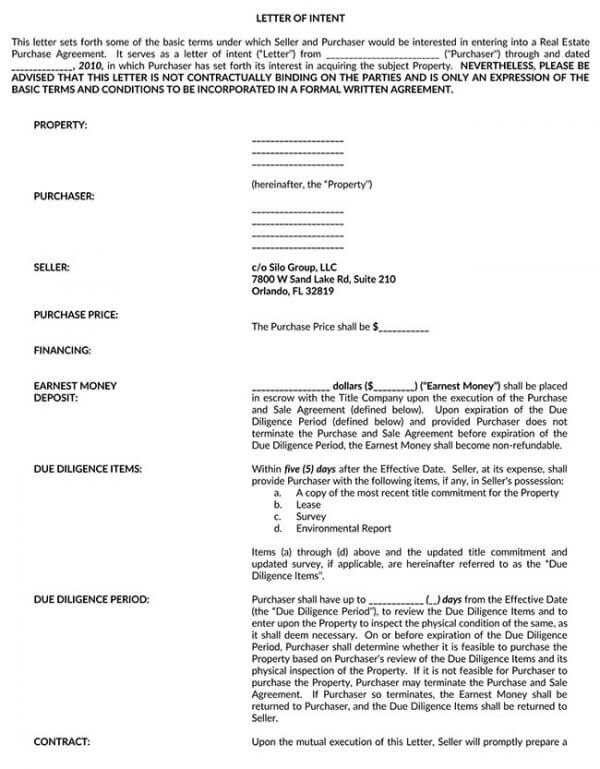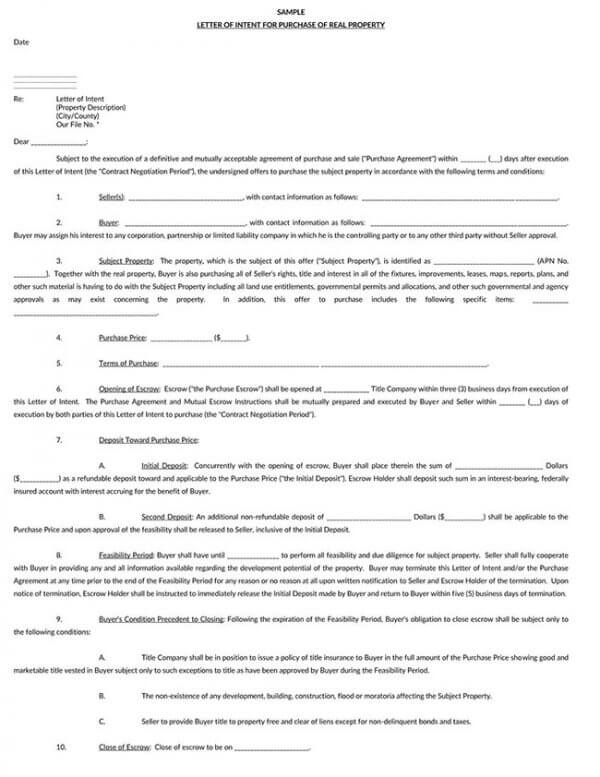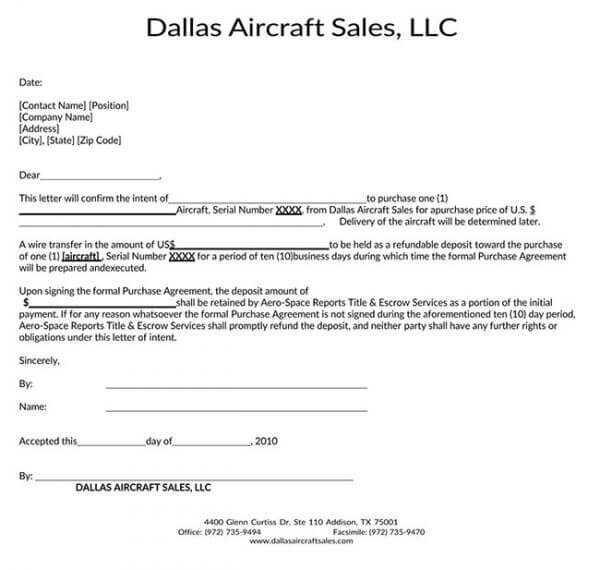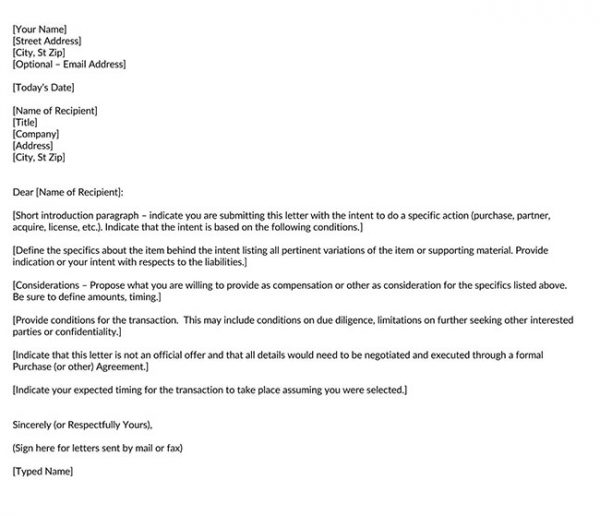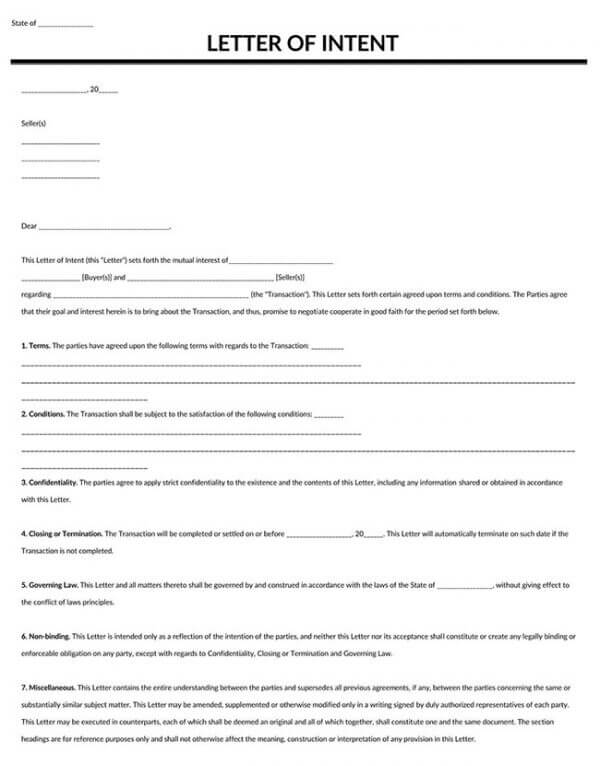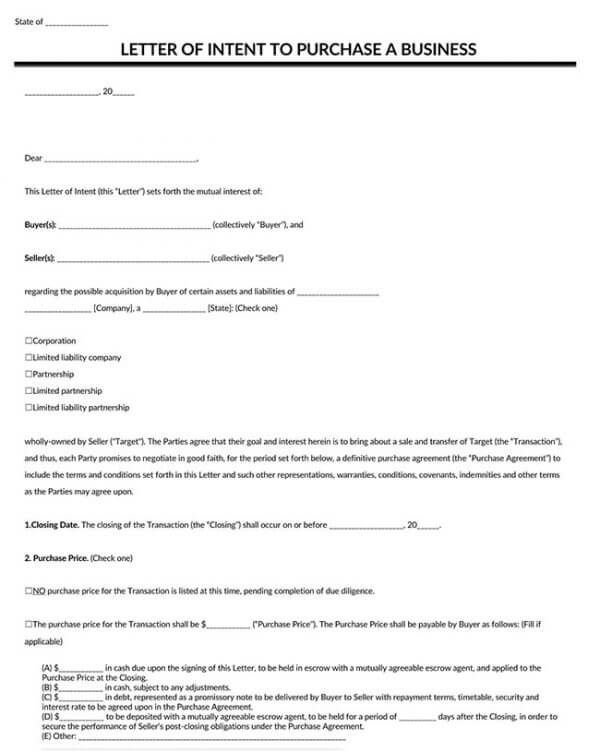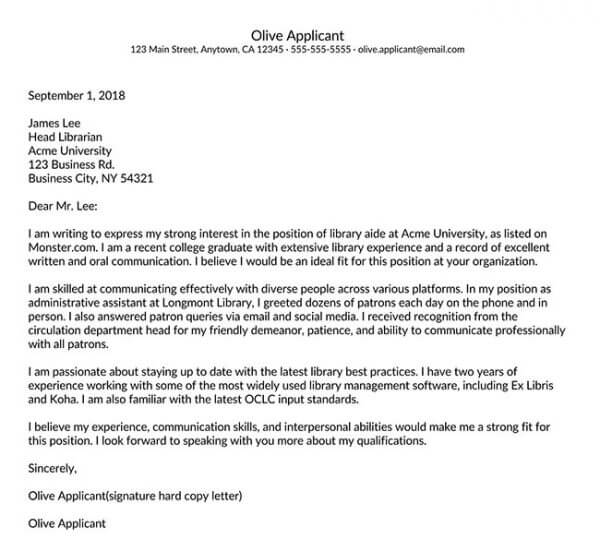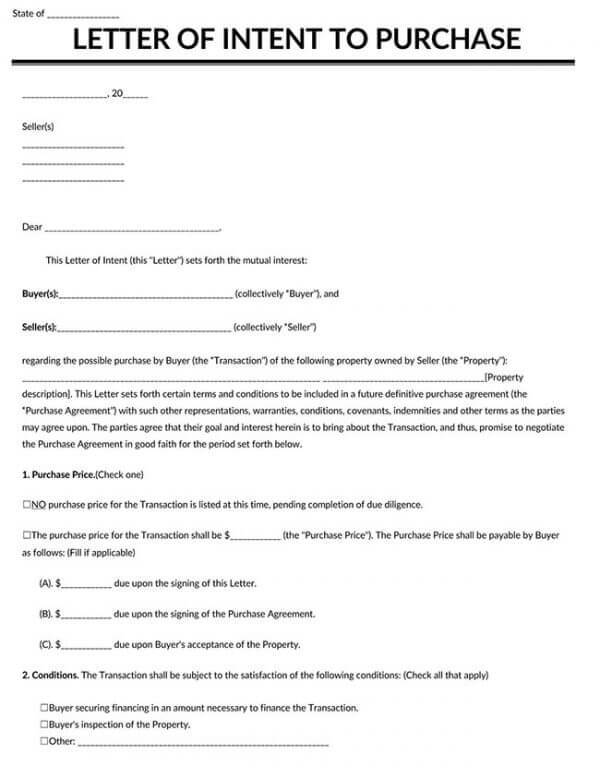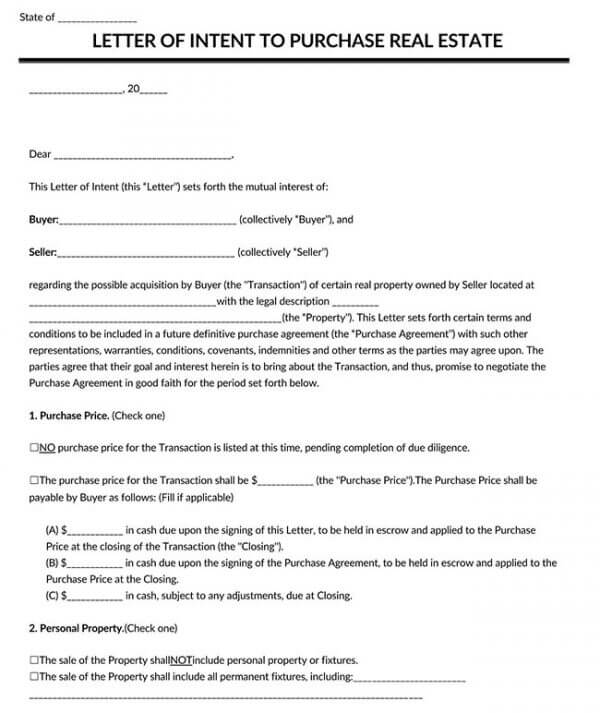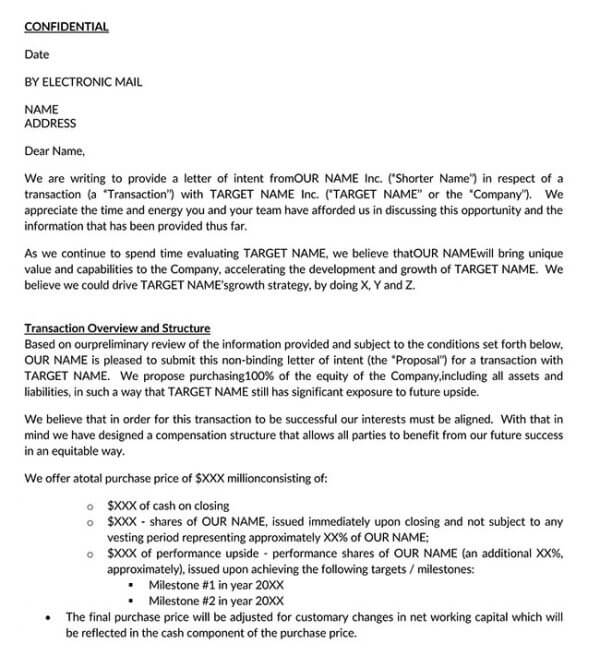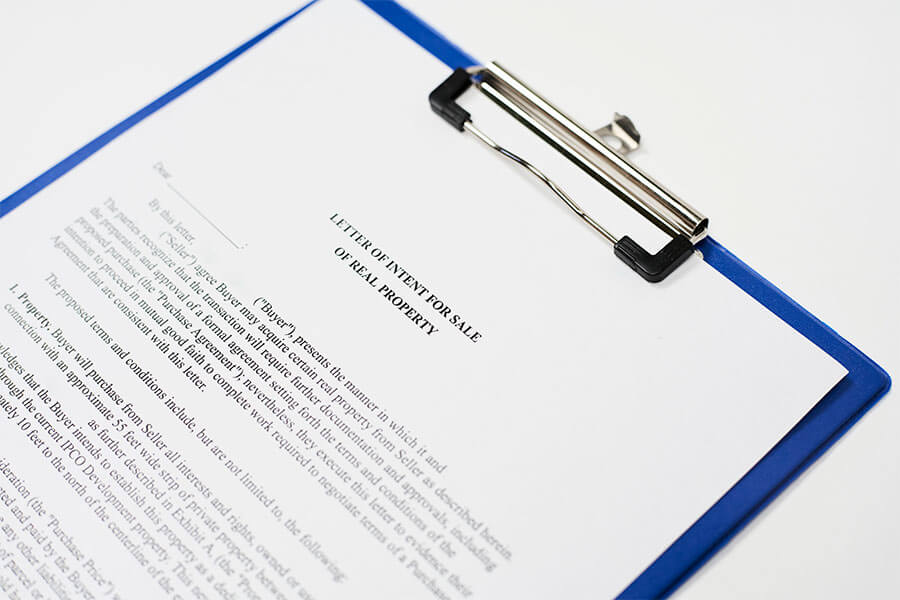By definition,
A letter of intent is a contract declaring one party’s tentative commitment to do business with another.
The letter explains the main terms of a potential transaction. Letters of intent, which are often used in large business transactions, are identical in composition to term sheets. The main distinction between the two is that letters of intent are presented in letter format, while term sheets are listicle in nature.
Letter of Intent- An Overview
A letter of intent is usually written and signed as negotiations between parties continue. Therefore, the final terms of an agreement can differ from what was agreed upon in the letter of intent. Before entering into a commercial transaction, both parties perform due diligence. Before signing a letter of intent, it is a good business practice to conduct due diligence. LOIs can be repetitive. One party may present an LOI, which the other party may either respond with a modified version of that LOI or draft an entirely new document. Ideally, there will be no surprises on either side of the table when both sides come together to formalize an agreement.
Many letters of intent contain non-disclosure agreements, which specify which aspects of a deal all parties agree to keep confidential and which information can be shared publicly. Many LOIs also have no-solicitation clauses, which prohibit one party from recruiting the other party’s employees.
Some characteristics of a letter of intent are:
- The letter of intent is a document that declares one party’s formal commitment to do business with another.
- The document, which is widely used in business deals, specifies the main terms of a prospective deal.
- When two parties are originally brought together to work out the general terms of a contract before settling the finer points of a transaction, LOIs are useful.
- An LOI contains terms such as requirements, specifications, schedules, and the parties involved.
- Non-disclosure agreements and no-solicitation clauses are common in LOIs.
- Letters of intent are often used outside of the corporate world when two parties agree to collaborate or develop a deal.
Letters of intent can be used for several purposes by different parties. Before negotiating and finalizing all of the fine points and specifics, parties may use an LOI to outline some of the simple, essential terms of an agreement. Furthermore, the LOI can be used to indicate that two parties are in the process of negotiating a contract, such as a merger or joint venture.
All in all, LOIs seek to accomplish the following:
- Determine which critical points of a deal should be negotiated.
- Protect all persons involved in the transaction.
- Declare the type of the deal, such as a joint venture or a merger between two firms.
Alternate names
A letter of intent is also known by other names. They are:
- Intent to Purchase Letter
- LOI
- Letter of Interest
- Term Sheet
- Memorandum of Understanding
- MOU
- Assurance Letter
- Framework Letter
Binding vs. Non-Binding
- Binding- If the letter of intent is legally binding, it can be implemented. The letter is handled in the same manner as any other legally binding agreement.
- Non-Binding- If the letter of intent is non-binding, it cannot be enforced. It is considered a representative letter in which the parties agree, in principle, with the intention of writing a formal agreement in “good faith.”
Types of Letter of Intent
There are various types of letters of intent, each serving different purposes.
These include:
Business Proposal – The letter of intent for a business proposal is a financial document used by a person or business to make a simple offer, either binding or non-binding, to invest with Principal Members. The offer would be a numerical contribution toward a portion of ownership in a business, partnership, or real estate.
Donation – A letter of intent for donation is a formal recognition of one’s desire to donate to a particular organization. The letter explains the form of donation being provided and the donor’s wishes on how their gift should be used when accepted by the receiver
Marriage – The letter of intent to marry is a confirmation of a person’s intention to marry another person. It is used when a fiancé’s entry into the United States is dependent on their marriage.
Real estate – A real estate letter of intent defines general terms for negotiating a final deal between a buyer or tenant and a property owner. A letter of intent’s aim is to get all parties to agree to a non-binding agreement on the terms of a sale or lease.
Stock purchase – A stock purchase letter of intent is used to formalize an agreement for stock purchase in a company, such as a business, limited liability company (LLC), or partnership. The contract applies to both publicly and privately traded corporations.
Software development – A software developer uses a letter of intent for software development to show interest in working for a potential customer. The letter acts as both an introduction to the developer’s skills and an overview of the software development project.
To sue – A letter of intent to sue is used to warn an alleged defendant that a lawsuit against them will be filed in court. The letter will sum up the claimed illegal act and specify a time frame within which the defendant will resolve the matter to escape legal proceedings.
Business purchase – The business purchase letter of intent describes a proposed purchase agreement, and the buyer and seller will agree in principle on the terms of a deal. The letter can be considered binding at the request of the buyer and seller, but most of the time, the letter establishes the basis for a formal agreement that will be written at a later date.
Employment – The employment letter of intent is a general application that defines a person’s qualifications and previous work experience to improve their recruitment possibility. The letter of intent should contain any academic and job background related to the organization in question and the applicant’s excitement for how the business works and its results.
National – The national letter of intent is a form that student-athletes use to show their interest in playing sports at NCAA colleges and universities. The NLI is not a necessary document for qualification. However, sending an NLI will ensure accuracy in the recruitment process.
School – A school letter of intent is used to present an applicant to the school application review panel. A standard school letter of intent includes a header, greetings, body, and conclusion. The letter should contain the applicant’s personal story as well as academic and extracurricular accomplishments and awards.
Purchase – A purchasing letter of intent is a written declaration of intent to purchase goods or services from a seller. A consumer uses this letter to show seriousness and their desire to do business in the future.
Subcontractor – A subcontractor letter of intent is used to indicate that a subcontractor plans to work for a general contractor (also known as the “principal contractor” or “prime contractor”). This document is usually used as an initial agreement between the two parties, and the signature of a subcontractor agreement accompanies it.
Vacate – A tenant drafts a letter of intent to vacate with the intention of terminating their contract. The letter is intended to serve as an official notice of the tenant’s intention to vacate the property and usually gives thirty days’ notice, or the minimum period permitted by the State.
How to Write a Letter of Intent
Writing a letter of intent is relatively easy, especially if one knows what to include in it. There are several components of a letter of intent.
These include:
Return address for correspondence
Several letters sent in an official capacity are required to have a return address where replies can be sent by mail if needed. This paper has designated lines in the upper left-hand corner of the letter to display the return address.
For example:
Jack Joe
23 King Avenue
Los Angeles, CA
Document the letter by date
The next step is attaching a particular calendar day when this letter becomes an active document between its sender and recipient. Use the two lines provided after the expression “Effective Date” to record the relevant calendar date.
Effective date___________.
Recipient address
The recipient is the one receiving the letter. Write their name and address on the three lines that follow.
Brad Stevens
223 Royal Lane
Boston, MA
Subject of the letter
The blank line after the acronym “RE” requires the subject of this letter to be written. After writing the subject, this letter would have clearly outlined the identity of its sender, the official date when it becomes an active document, the identity of its recipient, and the topic of discussion.
RE: ______________ (subject of the letter)
Longevity of the letter
The first paragraph will have two checkboxes that must be filled out. You can only select one since this establishes whether this letter is “Binding” or “Non-Binding.” Select the binding checkbox if this document is intended to bear the authority of subjecting its Parties to its contents without further scrutiny and judgment by a court (as it will be automatically upheld in court). However, if this document is intended to serve as a guideline for its participants and require the courts to review and determine if compliance is required, mark the “Non-Binding” checkbox.
Introduce the parties
Every participant in the agreement that will be mentioned should be identified. The first paragraph below the introduction acknowledges the full name and address of the person or business company intending to pay a fixed amount of money to the seller of property to obtain ownership of that property.
The Buyer____________(buyer’sname) with a mailing address of___________ (street name), City of_________, State of___________.
The seller, the actual owner of the property in question, also needs identification. Therefore, proceed to the next sentence and document the full name and address of the property’s seller on the first empty line of this section.
The seller__________(seller’s name) with a mailing address of (street name)___________, City of____________, State of___________.
Details of the planned payment
In this section, the buyer states clearly how much money he or she plans to pay for the seller’s products and services. This statement continues to the third blank line, containing a detailed record of the seller’s product or service that the buyer wants to purchase.
The Transaction: The buyer agrees to pay the seller the amount of____________(amount in words) Dollars ($___________) in exchange for___________(goods/services)
Payment terms
Payment terms that govern how it will be sent need to be established. The fourth article includes three checkbox options that address the various methods of payment submission. One of these must be selected for this concept to be solidified for all parties involved. If a definite payment date has been negotiated or would be deemed fair by all parties, mark the first option here, “At A Later Date.” If this is not the case, disregard this choice and move on to the second (“Signing”).
At a later date: purchase price should be paid by: (pick one)
If a payment date is to be set, the payment date should be identified.
The date of_________.
Check the second checkbox if the payment date would be arranged in a structured agreement. Both parties may have agreed that payment should be made at the “Signing.” If the signature date on this letter is the payment deadline, check the box labelled “Signing” and the first checkbox that follows. Otherwise, check the “another formal arrangement” box.
If the buyer’s payment will not be made “At a Later Date” or a “Signing,” define how payment will be made directly. Label the “Other” checkbox in those cases, then record when payment will be made on the blank line after the word “Other.”
The deposit status
A seller may need some certainty that the buyer is committed, particularly if a large sum of money is expected in exchange. To adequately describe this status, one of the two checkbox statements provided here must be selected. To indicate that a “Deposit Is Needed,” check the first checkbox. After marking the first check box, write the amount of the deposit in words and numerically.
o Deposit is required: The buyer shall send to the seller, along with this letter of intent, payment in the amount of____________(amount in words) Dollars ($___________). The seller will accept the deposit as: (mark one)
After establishing that a deposit is needed, it is critical to specify whether the deposit is “Refundable” or “Non-Refundable.”. If the deposit is “Refundable,” show this by checking the “Refundable” checkbox and recording the deposit refund terms.
Check the “Non-Refundable” box to show that the seller has no responsibility to return the money even though the transaction that caused this letter is cancelled. Select the box labelled “Deposit Not Required” if the seller does not need the protection of a requested deposit before the transaction is completed. This relieves the buyer from having any deposit sum but does not relieve the buyer of the remaining obligations under this agreement.
Conditions
Include any agreed-upon terms, such as the selling price or price changes. If the seller has committed to exclusivity (not to trade with other parties), it should also be included.
Other terms
There are other terms that can be included in the letter of intent.
They are:
- Confidentiality – the agreement and any information gathered will be kept private.
- Covenants –The actions each group must take when talks are in progress.
- Special Conditions – any special terms agreed upon by the parties to be included in the purchasing agreement, such as leaving some furniture or recruiting specific workers. Some of the special conditions that can be included are:
- An assessment of the property’s regulatory or other necessary approvals
- The buyer completes due diligence.
- The buyer obtaining funding
- The buyer successfully selling their property.
Indicate if financing is needed
Some transactions require financing. That is an additional source of funds accessible to the buyer to ensure that the seller is compensated. This is common practice in most purchases where the property’s asking price is high enough that the seller needs this guarantee of payment.
For example,
The seller can only request that the buyer verify that he or she has pursued and is likely to receive funding if future payments are not met. Mark the first checkbox labeled “Conditional Upon Financing” if this transaction is only possible if the buyer obtains financing. If the seller does not need such assurances, mark the “Not Conditional Upon Financing” box.
Display the applicable jurisdiction
This letter of intent can either be binding or nonbinding. Irrespective of this status, the state with “governing law” over this document must be identified. Fill in the blank space after the words “Under The Laws Of The State Of.”
Governing Law: This particular letter of intent shall be governed under the laws by the state of___________(name of state).
Contact information
Fill in a valid mobile number where you can be called during the employer’s business hours, and then enter your email address. Ensure that all these are well-monitored, as an interested Interviewer can use one of these to start communicating on behalf of the future employer.
Contact me by phone at_____________ or by email at______________.
Signing
Examine the material that has been presented. Sign your name on the line directly under the word “sincerely” if this accurately represents your intent with the recipient employer.
Sincerely,
___________
(Your signature)
Free Templates
Download our free and customized templates from here:
Applications of a Letter of Intent
A company’s legal staff usually writes LOIs in the context of business transactions, and they describe the specifics of the planned action. For instance, LOIs specify if a company intends to acquire another company with cash or through a stock transaction in the merger and acquisitions process.
Parents can use LOIs to convey their wishes for their children in the event that both parents pass away. While they are not legal documents like wills, LOIs can be accepted by family court judges who are in charge of deciding what happens to the children in such situations.
Lastly, LOIs are also used by people pursuing government funding and highly coveted high school varsity athletes. They write LOIs to express their intention to attend specific colleges or universities.
Benefits of a Letter of Intent
You miss out on a variety of purchase or selling opportunities without this document. Before agreeing to grant finance, banks or lenders may need some proof of an agreement. Alternatively, if the terms of the agreement are still being negotiated, either party could doubt the other party’s commitment to closing the deal and walk away.
Below are some benefits of using a letter of intent:
Saves time
Seller’s perspective– It reduces the time spent when negotiating a deal
Buyer’s perspective– It reduces the time spent doing a background check on a transaction the other party was not interested in.
Saves money
Seller’s perspective– This document ensures that the property will not be sold to another buyer at a lower price since it is stated in the contract. It also acts as a confirmation that the seller will receive payment.
Buyer’s perspective– It ensures that you will receive funding from a grantor. It also guarantees that the buyer will not be charged more money for the property from a different seller.
Saves from mental anguish
This document prevents a seller from selling the property to someone else. It also prevents the buyer from buying from someone else since the contract has bound them.
Frequently Asked Questions
If a Letter of Intent is not binding, then what is it good for?
A Letter of Intent serves only to help finalize the terms of a potential agreement. A letter of intent is not seen as binding because it is just a tool to initiate a further dialogue.
What is a letter of intent used for?
A letter of intent is used to declare one party’s commitment to do business with another party. The letter explains the main terms of a potential transaction.
Are there any conditions in a letter of intent?
Yes. The conditions contained in a letter of intent are; the buyer obtaining funding, the buyer carrying out background research, a successful sale of the buyer’s home, and an inspection of the property regulatory or other necessary approvals.
